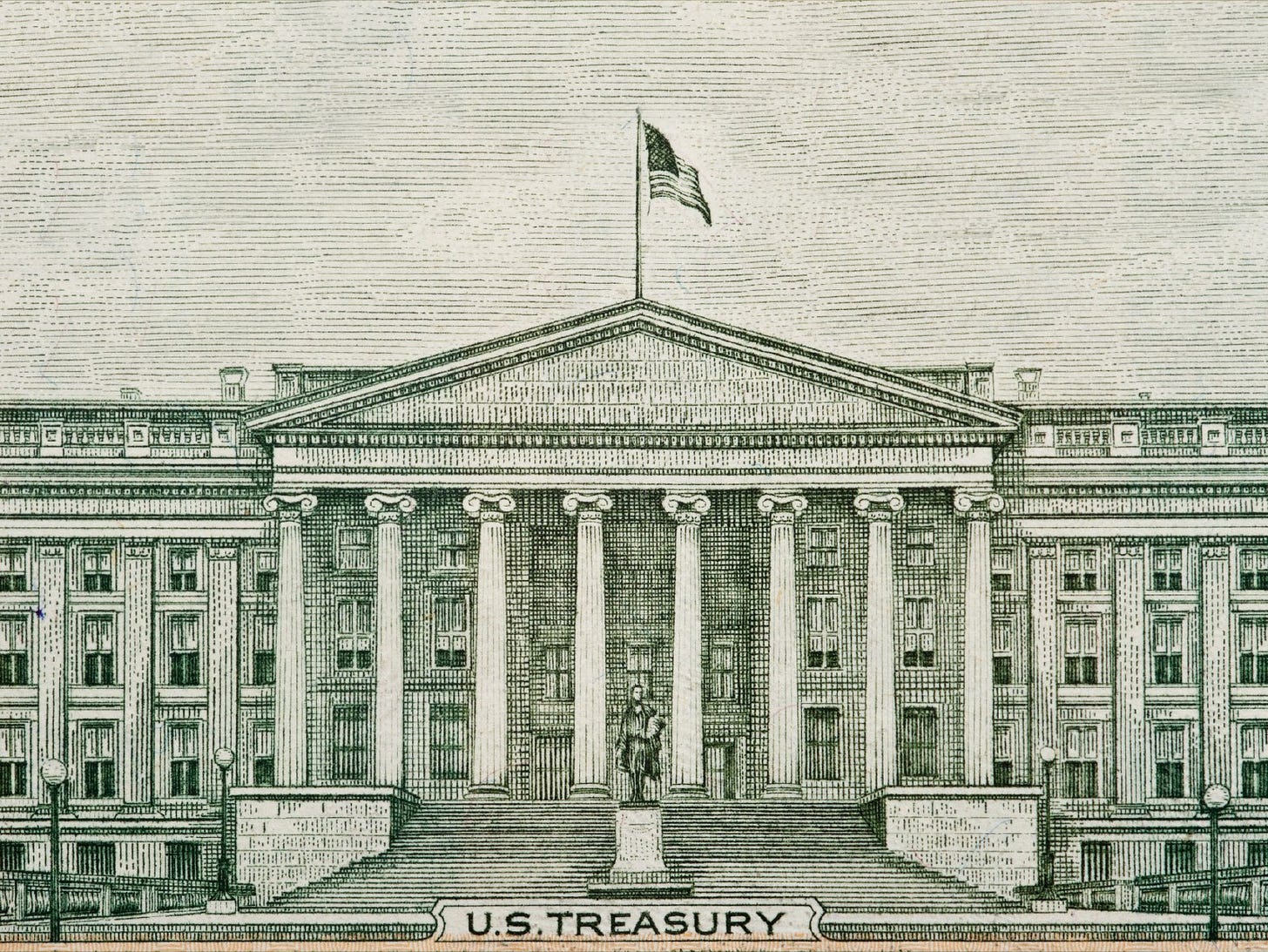US Gov Debt at 31 Trillion, Over 100% of GPD
US government debt is at 31 trillion dollars, which is equivalent to over 100% of US GDP. The last time the debt was greater than US GDP on any given year was during WWII. While Europe was destroyed, the US came out of WWII relatively unscathed and imposed the US dollar as the world reserve currency after the Brenton Woods Agreement.
The US was able to pay off its WWII debt because it experienced fast growth after taking the reins as the world superpower. Unfortunately, the current growth prospects for the US are poor in comparison. US demographics are not looking good. Baby boomers are retiring, health care is more expensive, and birth rates are dropping. Less people will pay for more debt.
Servicing Old Debt with New Debt
I suspect that the US will have no choice but to pay for debt by issuing more debt. The big question is, what is the limit? I suspect that the limiting factor is the cost of servicing the debt (aka the US Treasury making interest payments to treasury holders) as a percentage of US tax revenues. As long as the government keeps the ratio of debt servicing costs and tax revenues stable, we may live in a world where the government is comfortable continuously increasing debt beyond previous comfort zones.
Money Printer Go Brrr?
If the government expands debt, what is the impact on inflation? Understanding inflation is tricky. When inflation is taught in university, it assumes the Fed and the US gov have a monopoly over the supply of US dollars. The Eurodollar complicates this simple picture. Eurodollars are US dollars that are created by financial institutions outside of the US in the form of credit. Banks creating Eurodollars are not subject to US regulations like reserve requirements.
The amount of Eurodollars created is suspected to be huge, but it is unclear exactly how many Eurodollars are in existence. So how many Eurodollars are created in comparison to dollars created via debt issued by the US? I do not know yet.





